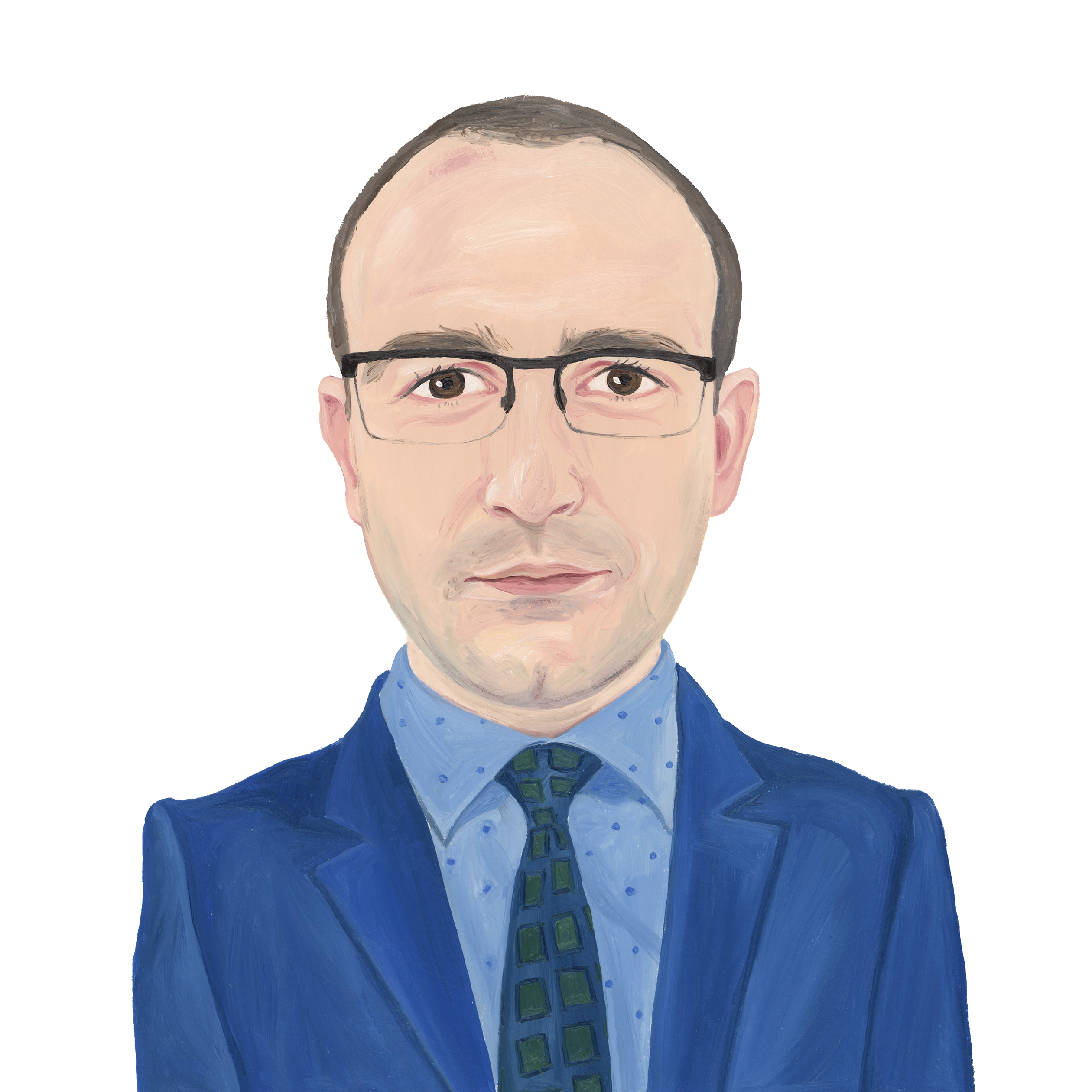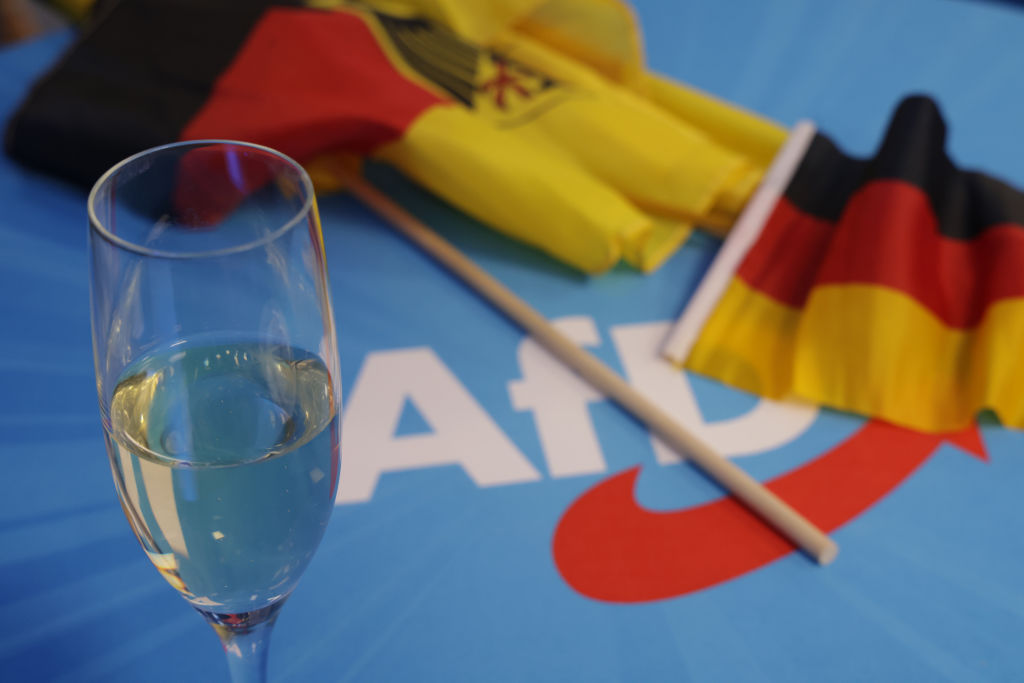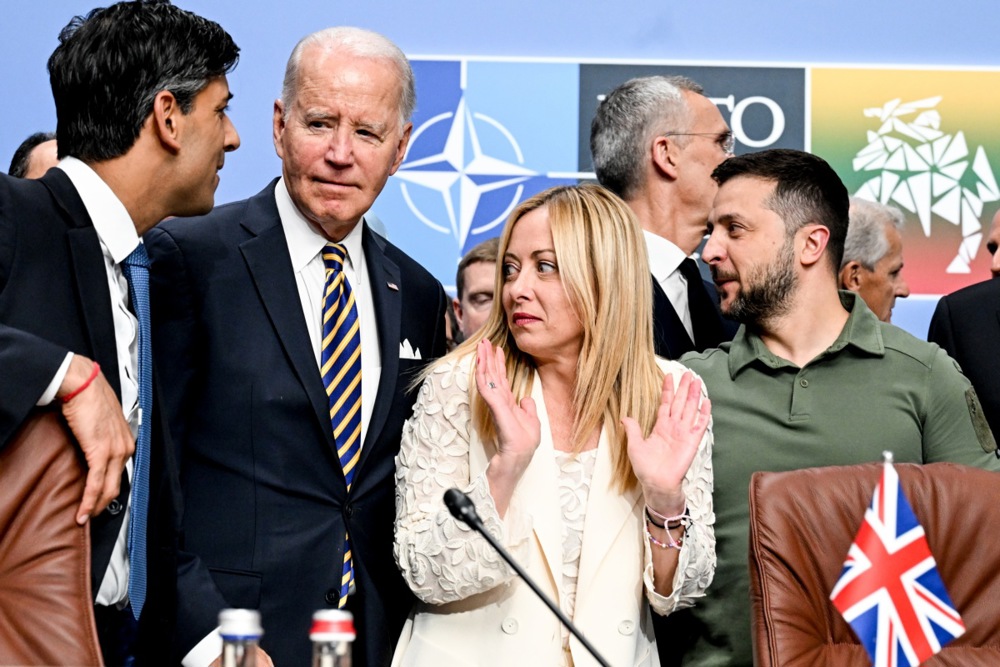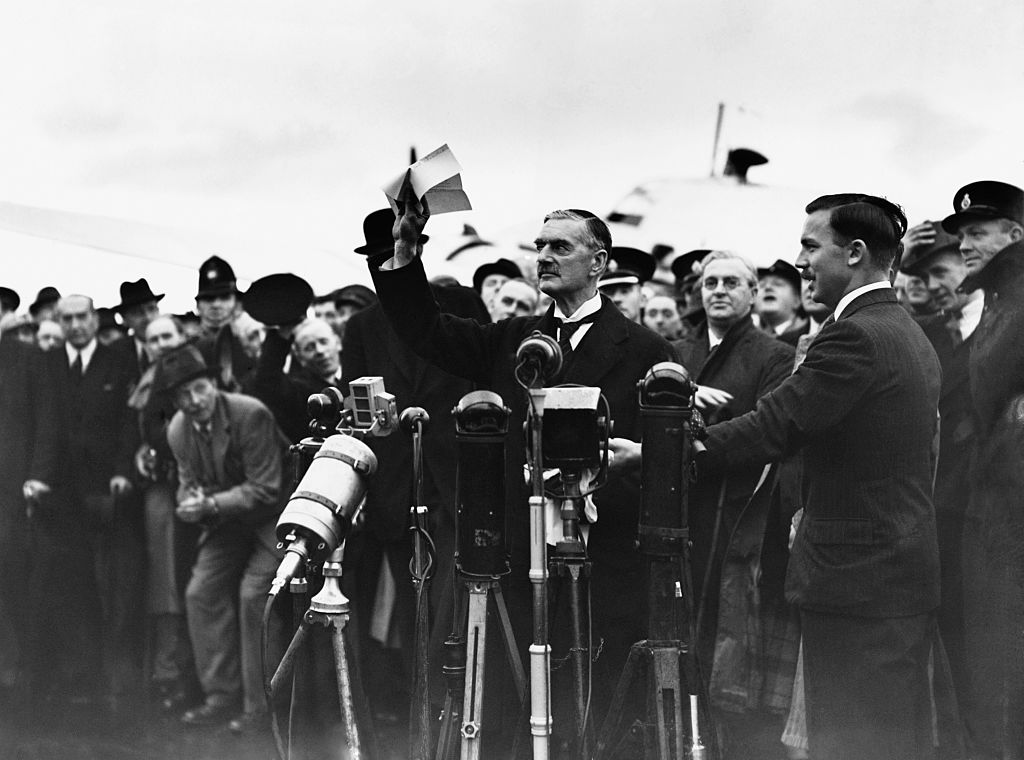For all the vast amounts of analysis and the constant discussion dedicated to the Ukraine war across Western media and specialist centres, there is still considerable divergence of opinion on what Russia actually wants and what its intentions are. There are those who are convinced that Putin is simply bent on old-school physical conquest of territories, looking to reconstitute the old Russian or Soviet empire (critics are never quite sure which one it is).
Others believe Russia’s aim is to destroy NATO politically, with military aggression and occupation of “free” bits of land as a means rather than an end. But there is also a view that Russia is incapable of further westward expansion, that it’s showed it can’t even occupy Ukraine, and that therefore Putin is not actually interested in a war with NATO, which he could not win.
Through all this, the question persists: what does Russia actually want, in the end? This vital question is now further obscured by the current peace negotiation process overseen by the United States, with global attention riveted on what Russia wants in relation to Ukraine specifically. Yet this is may be the wrong way to look at it. Rather, the starting point should be Russia’s overarching grand-strategic design, of which Ukraine is just one aspect. It may be that understanding Moscow’s highest idea or concept of its own security will help discern better ways to deal with Putin at the negotiating table.
And the fact is that Russia has been rather consistent, over a very long period of time, about how it frames its security vision. Since the Cold War Russia has championed the concept of a single European security architecture, envisioned as a cooperative framework spanning “from the Atlantic to the Urals” and grounded in the principle of “indivisible security” – i.e. the notion that no state’s security should be enhanced at another’s expense. This vision, first articulated in the 1970s and refined through decades of geopolitical shifts, reflects Russia’s strategic aim to counter and undermine Western-dominated security structures, particularly NATO, and secure its role as an equal partner in Europe.
The roots of Russia’s vision lie in the 1975 Helsinki Final Act, signed by 35 nations under the Conference on Security and Co-operation in Europe (CSCE). This document embedded the principle of “indivisibility of security”, a concept the Soviet Union leveraged to legitimise its post-World War II sphere of influence in Eastern Europe. While the Helsinki Act did not explicitly propose a single security architecture, it laid the conceptual groundwork for later Soviet and Russian claims that any expansion of Western security alliances constituted a violation of the continental balance.
It was Mikhail Gorbachev who built on the Helsinki idea and turned it into a more substantial geopolitical vision. In a speech given on 6 July 1989 to the Council of Europe, Gorbachev articulated the notion of a “Common European Home” – a space defined not by military blocs but by mutual interdependence and shared security. The phrase “from the Atlantic to the Urals”, first used by de Gaulle in a purely geographic sense, was now repurposed by Gorbachev as a political concept signifying a Europe that included the Soviet Union as a legitimate co-architect of regional order. In the waning years of Soviet reformism, this vision was intended to serve both as an ideological bridge to the West and as a mechanism for managing the USSR’s strategic decline.
In the post-Soviet era, Russia’s weakened state under Boris Yeltsin initially curtailed its capacity to shape continental affairs, but the vision of a pan-European security framework persisted. The Organization for Security and Co-operation in Europe (OSCE), successor to the CSCE, became the institutional vehicle through which Russia attempted to resist NATO’s “monopolization” of European security, and through which it advocated for an inclusive security system.
At the November 1999 OSCE Istanbul Summit, Yeltsin pushed for a “Charter for European Security”, again emphasizing “indivisibility of security” and “equal partnership”. He warned that NATO’s expansion – Poland, Hungary, and the Czech Republic had joined in March 1999 – risked reinstating “dividing lines” in Europe. While Yeltsin adopted a relatively soft language (certainly compared to his successor), the thrust of his position reflected increasing Russian concerns with what they saw as Western preference for NATO alliance-based exclusivity over OSCE-centric inclusivity.
Then came Putin, who took power in 2000 and whose arrival marked a decisive shift from accommodation to assertion. His notorious February 2007 speech at the Munich Security Conference constituted a watershed moment: a rhetorical broadside against what he perceived as US unilateralism and NATO’s eastward expansion which was, in his view, a betrayal of post-Cold War assurances. He called for a new “architecture of global security” that included Russia as a co-equal player, again rejecting a NATO-centric framework for Europe and invoking the mantra of “indivisible security”.
A year later, president Dmitry Medvedev’s 2008 proposal for a European Security Treaty signalled a new phase in Russia’s long-running efforts to advance its security vision: the translation of normative claims into binding institutional architecture. Unveiled in Berlin in June 2008 and later formalised in draft form, the treaty sought to legally prohibit any state or alliance from enhancing its security at another’s expense (per the old “indivisible security” idea) – effectively seeking to delegitimise NATO expansion particularly in Ukraine and Georgia, and asserting a Russian veto over Euro-Atlantic alignment. Medvedev also reiterated the necessity of a “common security space” in Europe at the 2010 OSCE Summit in Astana.
Of course, all of this was overshadowed by the August 2008 Russo-Georgian war and its aftermath. Medvedev’s initiatives hardly even registered in the public debate. Insofar as it did elicit any attention among professional and official circles, the proposal understandably met with heavy Western scepticism and was marginalised as Russia could hardly be seen as a credible interlocutor for “cooperative” security at that point.
The 2014 annexation of Crimea reoriented Russia’s security narrative from normative critique to political-strategic justification. In his 1 July address to Russian ambassadors following the annexation, Putin explicitly cited the principle of indivisible security to indirectly justify Russian intervention, arguing that NATO’s encroachment threatened Russia’s core interests. This downward trend persisted. By the late 2010s, the Russian vision of a single European security space had become not merely aspirational but reactive – a framework invoked to challenge the legitimacy of a Euro-Atlantic order perceived as irrevocably antagonistic to Russian interests.
The most explicit revival of the architecture concept emerged in December 2021 in the context of an escalating crisis over Ukraine, as Russian diplomacy demanded formal security guarantees from the United States and NATO. The proposals – draft treaties released by the Russian Foreign Ministry – called for a moratorium on NATO expansion and a rollback of allied military deployments near Russian borders. This was effectively a return to the Medvedev approach in terms of seeking codify Russia’s strategic red lines in legally binding terms.
Putin’s address on 21 February 2022, delivered days before the full-scale invasion of Ukraine, advanced this logic to its terminal point. By effectively accusing Ukraine (with Western support) of violating “the principle of equal and indivisible security” by seeking to “pick its own security system” without regard to Russian interests, the he recast aggression as pre-emption and structural imbalance as the consequence of Western intransigence.
Russia’s persistent invocation of indivisible security has faced enduring resistance in Western capitals which see it for what it really is: less a call for even-handed equilibrium than as a Trojan Horse – an instrument of institutional subversion, designed to dilute NATO’s coherence and expand Russia’s sphere of influence under the guise of legal equality. But the complete erosion of trust after Russia’s assaults on Georgia (2008), Crimea (2014), and Ukraine (2022), has rendered Moscow’s credibility as a co-architect of peace effectively untenable in political terms.
Still, for all of Russia’s hypocrisy and deceitfulness, it is well worth paying serious attention to its concept of a single European security architecture. This is not merely a diplomatic or rhetorical device but a core strategic notion within the Russian state, with a long history – anchored in the Helsinki principles, reformulated by Gorbachev, institutionalized by Medvedev, and militarised under Putin. They may be using it cynically to advance their own interests, but that doesn’t mean that the Russians don’t also actually have it at as a true aim of policy.
Any enduring peace with Russia, therefore, will likely require a wider settlement that engages – in some way, at least – with this notion of a “shared security space” from the Atlantic to the Urals. The trick will be to re-imagine it and make it compatible, to some degree, with core European interests. Without something of this sort included on the wider negotiating agenda, there will never be any real peace, or not for long.






Stopping Russia might take more than ‘offering’ peace